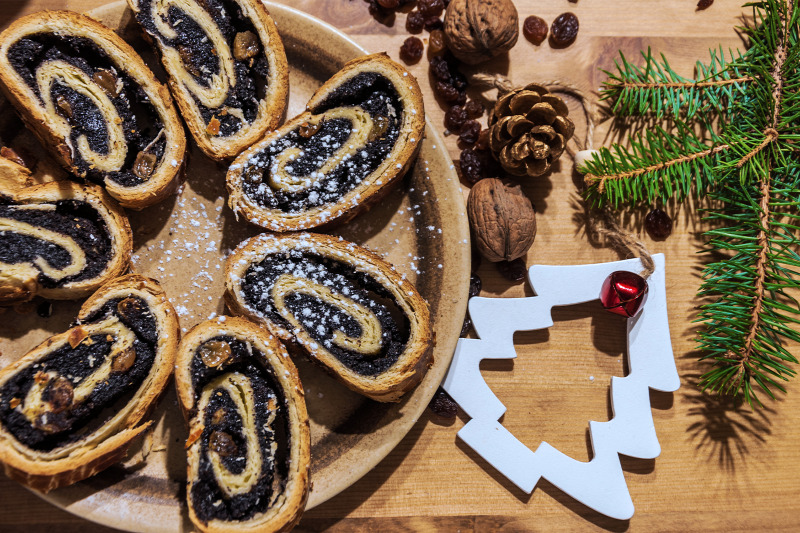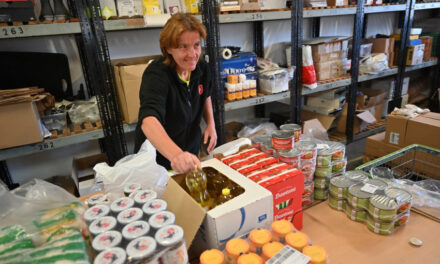Did you know that if you put the familiar nut bagel on the table at Christmas, it protects it from spoiling? And if there are poppies, then in the coming year will the inhabitants of the house be blessed with great abundance and happiness, and will the new year bring husbands to the young girls?
According to some sources, the bagel originally comes from Silesia, a type of cake known in Europe since the 14th century. Others write about Armenian origins, and as is often the case, the exact origin story fades into the mists of the past. What is certain: the bejglit was originally made in the shape of a horseshoe, hence its German name, and then entered the Hungarian language through Austrian mediation in the second half of the 19th century.
Today, we think of bagels as hungaricum and a typical Christmas cake, which is mainly made with poppy seeds and walnuts. Christmas bagels can also be found in peasant traditions: walnuts were used against spoilage, while the poppy symbolized abundance, the "thick penny".
It spread in our country in the second half of the 19th century, initially it was made exclusively at home, it was a cake for family holidays. There are two types of opinions about the history of the bagel as a confectionery product. One connects its production with the Bratislava bakers' guild established in 1376. As a result of changing urban consumer habits and needs, it was decided in 1559 to bake walnut and poppy horseshoes and sell them.
The famous Bratislava horseshoe (kifli) became successful and quickly spread to other regions. According to others, the history of the Bratislava horseshoe is linked to an anonymous confectioner from Bratislava, who prepared a smaller version of the Christmas bagel at the beginning of Advent, on St. Michael's Day, and gave it to children as a present.
The name bejgli appeared in print in Hungarian in 1932, with the adoption of "Beugen" of Bavarian-Austrian origin (beugen - to bend is the basis), the name of the cake spreading from Silesia has been known since the 16th century, that is, an earlier adoption is also conceivable. The recipe of the preparation reached the urban-bourgeois and then the village kitchens with the help of 19th-century cookbooks and pastry books. This reduced its festive character to some extent, but even today, most of it is sold at Christmas.
Our grandparents still grinded the poppy themselves, cracked and ground the walnuts themselves, which made the delicious filling of the bejgliks. It was an all-day family program to make bagels for a family, in which both young and old participated. There are many different versions, if you ask your grandparents, they will almost certainly be able to tell you their own family recipe. Nowadays, it is not only possible to make fillings with walnuts and poppy seeds, in recent years it has become fashionable to use dried plums, dried apricots, marzipan, and nutella for fillings, and of course there are also shape-friendly, health-conscious versions.
What is the secret of a beautiful bagel? A marbled, slightly cracked, shiny crust is what characterizes the real bagel. But how can we achieve this? Mix one whole egg and two egg yolks and beat them. Apply this to the tops of the cakes that are about to be baked, then let them dry. When it has dried nicely, brush it all over with beaten egg white. After that, you can go into the oven, where we bake them to a nice golden brown!
Source: origo.hu
Image: Shutterstock













